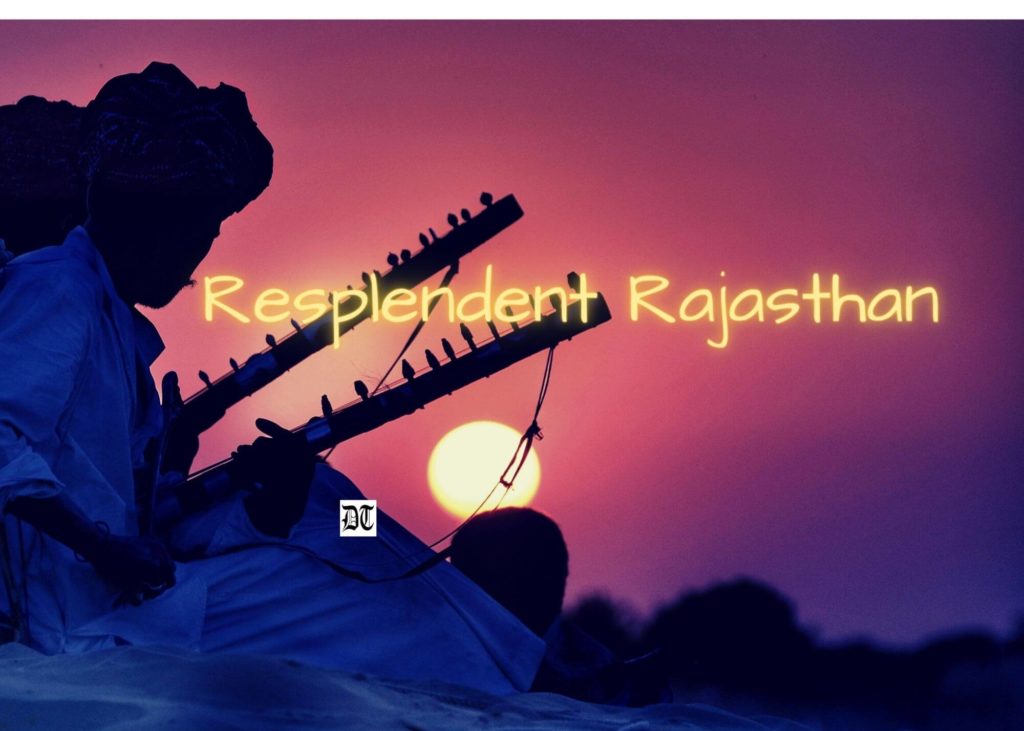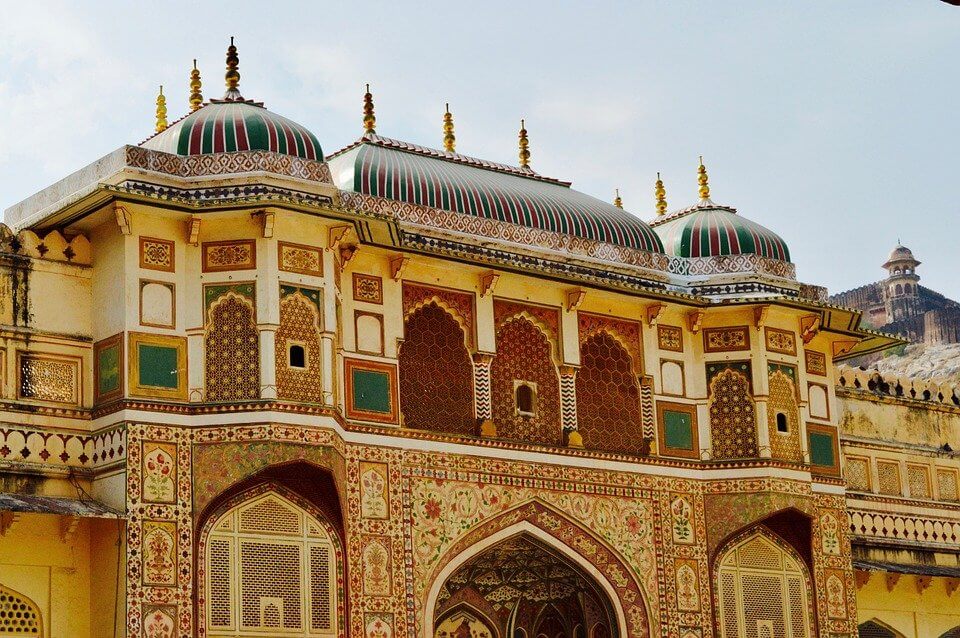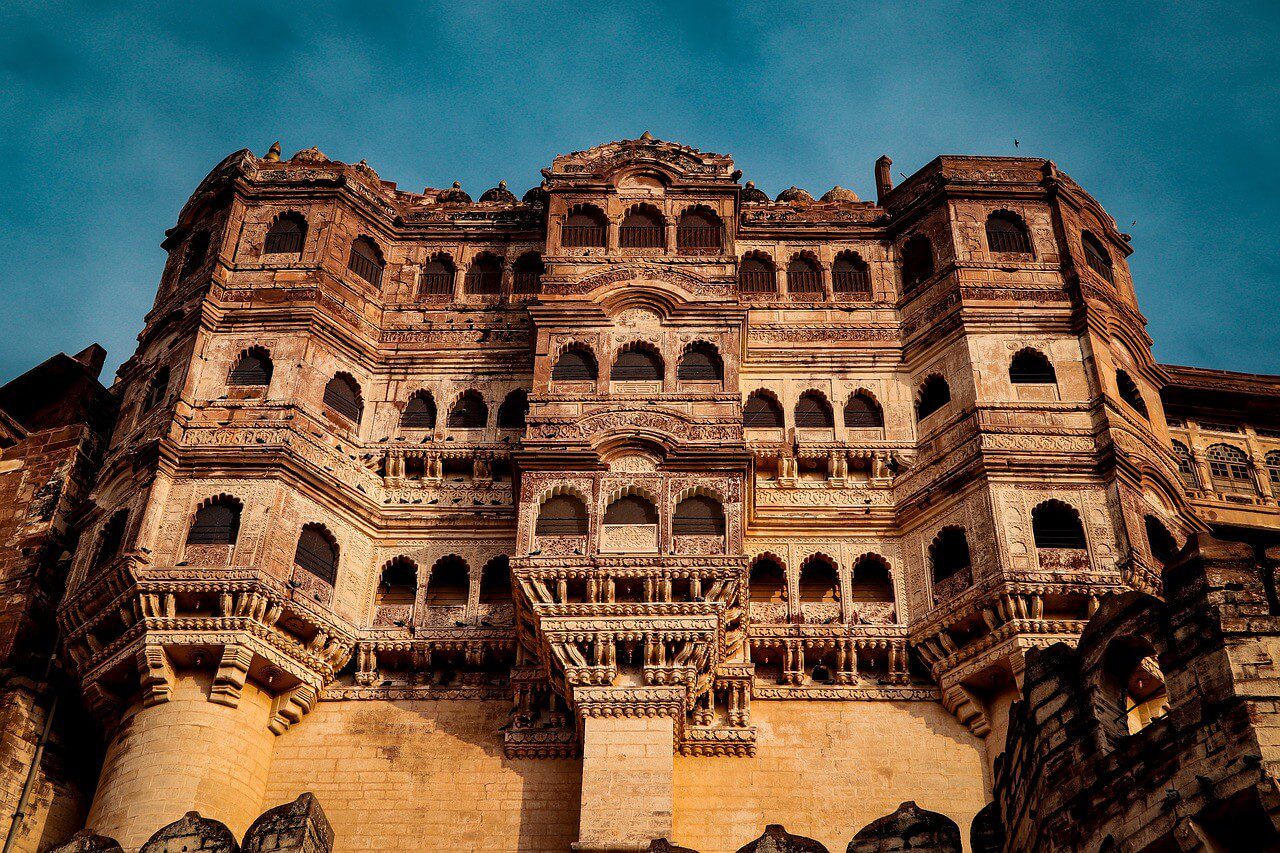Reading Time: 4 minutes
Dr. Parneet and Dr. Kiran tell us about two famous forts of Rajasthan, Mehrangarh and Amer, at Jodhpur and Jaipur, respectively, where beauty and security blend. An exclusive for Different Truths.

Mehrangarh Fort, Jodhpur holds a significant place among the famous hill forts of Rajasthan. Built in 1459 AD, it was the headquarters of Rajput Rathore Dynasty for over five centuries. One hundred and twenty feet high, with six metres thick walls, the fort is located on a rocky hill named ‘Chidiya Toonk’ that rises 400 feet above the surrounding plain. It is also called Myurdhawajgarh as it is shaped as the feather of a peacock (Myur).
There are seven gates (called ‘Pol’ in Rajasthani) that include Jaya pol or ‘victory gate’ built by Maharaja Man Singh to commemorate his victories over Jaipur and Bikaner armies and Fateh Pol which commemorates Maharaja Ajit Singh’s victory over Mughals. Loha Pol is the final gate into the main part of the fort complex.
The historical canons like ‘Kilkila’ and ‘Kadak-Bijli’ … add to its martial value.
The historical canons like ‘Kilkila’ and ‘Kadak-Bijli’ established by Maharaja Ajeet Singh, and ‘Shabhubaj’ established by Maharaja Abhay Singh add to its martial value. This majestic fort had been the eye witness to many phases of the Rajput history within the rule of King Maldev, Shershah Suri’s siege attempt, loyalty of Veer Durgadas and so on.
Temples and a Mosque
Famous for its intricate lattice work and Jharokhas, the fort complex has the Chamunda Mata Temple built by Rav Jodha along with temples of Aanand Dhan and Murli Manohar built by Maharaja Abhay Singh and mosques like ‘Bhure Shah ki Majar’.
Maharaja Pan Singh established the royal library, Pustak Prakash Bhawan, in its premises, in 1805. It is interesting to note this fort was one of the filming locations for Disney’s 1994 live-action film The Jungle Book.

Amer Fort
The pink Jaipur narrates the glorious tales of royal glory not only through its palaces but through its forts too, which include Amber Fort along with forts of Jaigrha and Nahargarh. With its large ramparts, series of gates and cobbled paths, the Amber fort overlooks Maota Lake. Amer was once the capital of princely Jaipur state, and the fort the residence of its Rajput rulers. Maharaja Man Singh I, who led Mughal Emperor Akbar’s army, commenced its construction, in 1592, on the remains of an 11th-century fort.
The Amer Fort is popularly known as the Amer Palace.
The Amer Fort is popularly known as the Amer Palace. Built with red sandstone and marble, this grand palace is divided into six sections, each with its own entry gate and courtyard. It consists of the Diwan-e-Aam, or ‘Hall of Public Audience’, the Diwan-e-Khas, or ‘Hall of Private Audience’, the Sheesh Mahal and the Sukh Niwas where a cool climate is artificially created by winds that blow over a water cascade within the palace.
The entry to the fort is through the Suraj Pol (Sun Gate) which leads to the first main courtyard. This was the place where armies would hold victory parades with their war bounty on their return from battles, which were also witnessed by the Royal family’s womenfolk through the latticed windows.
At Jaleb Chowk, Maharaja’s personal bodyguards held parades under the command of the army commander or Fauj Bakshi. Amber fort or Amber Palace, along with Jaigarh Fort, is located on the ‘Cheel ka Teela’ (Hill of Eagles) of the same Aravalli range of hills.
Jaigarh, built about 400 m above the Amer Fort was a centre of artillery production for the Rajputs.
Jaigarh, built about 400 m above the Amer Fort was a centre of artillery production for the Rajputs. It is now home to the historical cannon, Jaivana – at the time of its manufacture, in 1720, it was the world’s largest cannon on wheels of the Early Modern Era. This huge cannon had been manufactured at Jaigarh only.
The Amber Palace and the Jaigarh Fort are considered one complex, as the two buildings are linked by an underground passage. This passage was meant as an escape route in times of war to enable the royal family members and others in the Amer Fort to move to a more secure place i.e. Jaigarh Fort. A unique feature of the fort is the lattice-work windows from where one can observe the expanse of the surrounding landscape. The original purpose of the Jaigarh Fort was to store arms and ammunition for the Amer Fort in times of war.
The fort was originally named Sudarshangarh.
Along with Amer Fort and Jaigarh Fort, Nahargarh once formed a strong defence ring for the city. The fort was originally named Sudarshangarh. It displays the fine Indo-European architecture with domed ceilings, scalloped archways and sprawling gardens. The two storey palace, Madhavendra Bhawan built by Raja Sawai Madho Singh is a prominent structure inside the fort.
Visuals sourced by the authors from Pixabay.com
Co-author

Dr Kiran Deep is Associate Professor in English at Sri Ganganagar (Rajasthan). Her English translation of eminent Punjabi poet Surjit Patar’s poems has been published by Sahitya Akademi. Her publications include the research book, “Mapping the Creative Terrain: Revisiting George Eliot and Thomas Hardy”, along with several articles in literary journals of national and international repute.
















Interesting and informative
Thank you Komal for your comments
Commendable work and beautifully presented…i am really proud of you to have you as my true guide…
Very impressive E article of forts of Rajasthan specially that of Mehrangarh of Jodhpur and Amber of Jaipur with description of its valour history architectural values and craftsmanship.